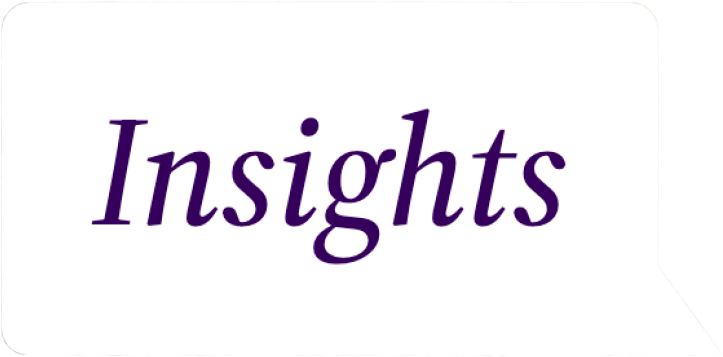Progress Monitoring: The under-used tool to ensuring your school’s efforts lead to measurable improvements in student outcomes
Progress monitoring is a critical yet often underdeveloped aspect of school management. In our work across the US, we find that while many schools and districts focus on implementing improvement strategies, they frequently overlook the mechanisms needed to evaluate the effectiveness of these efforts. This gap can hinder progress, waste valuable resources, and frustrate stakeholders. By embedding robust performance monitoring systems, school and district leaders can better understand the impact of their initiatives, make informed decisions, and ultimately drive improvements in student outcomes.
This article explores the challenges, issues, and benefits of progress monitoring, using real-world examples to highlight actionable strategies for improvement in our schools.
The challenges
Despite its importance, progress monitoring often falls short due to several key challenges:
- Lack of Metrics and Monitoring Tools
Many schools struggle with identifying actionable metrics that align with their goals. While they may have standards or rubrics to guide improvement, the absence of specific tools or methodologies for tracking progress often hampers their ability to measure success. - Time Constraints
School leaders and teachers are often overwhelmed by the day-to-day demands of running classrooms and managing schools. This leaves little time for meaningful reflection and monitoring of the impact of their efforts. Without dedicated time and systems for evaluation, progress monitoring often falls by the wayside. - Misalignment of Strategies and Outcomes
Schools often implement multiple strategies simultaneously but fail to assess the effectiveness of individual interventions. This approach can lead to wasted effort and resources as schools may know whether they’ve improved overall, but often lack clarity on which specific actions drove that improvement. - Insufficient Systems and Structures
In many cases, systems and structures for tracking progress are either underdeveloped or underutilized. For instance, tools don’t measure the most important aspects of learning (both student and adult learning) that are vital for improvement. Without these foundational elements, monitoring efforts cannot be effectively implemented or sustained.
Why Performance Monitoring matters, and what happens when you get it right
- Focus on Student Outcomes
At its core, performance monitoring ensures that all efforts ultimately contribute to student achievement. By tracking progress across various metrics, schools can stay focused on their primary goal—helping students succeed academically and socially. - Capacity Building
Monitoring builds the capacity of school leaders and teachers to critically evaluate their own practices. For example, self-assessment tools and peer observation processes help educators identify areas for growth and improve their teaching strategies. - Improved Decision-Making
When schools monitor progress effectively, they can make informed decisions about which strategies to continue, expand, or discontinue, and allocate resources more efficiently. - Enhanced Accountability
Effective monitoring enables schools to assess progress and share it with stakeholders, including parents, external evaluators, and funders. This transparency fosters trust and provides evidence of the school’s commitment to improvement.
Practical Steps for Improving Performance Monitoring
- Design specific metrics
Move beyond general goals and create specific, measurable metrics for each intervention or strategy. These metrics should align with key priorities such as student outcomes, teacher development, family engagement, or leadership performance. - Establish systems and tools
Invest in foundational tools such as teacher observation forms, self-assessment rubrics, and parent engagement surveys. These tools provide a structured way to gather data and evaluate progress. - Monitor progress regularly
Rather than waiting for end-of-year results, schools should adopt review cycles that reflect their chosen formative data cycles (such as grading cycles, formative assessment tool cycles, etc depending on the school). This allows them to adjust strategies as needed and ensures that interventions remain aligned with their goals. - Incorporate reflective practices
Reflection is an essential component of monitoring. Schools should establish protocols for reflective discussions that focus on the impact of their actions rather than just the effort invested. - Engage stakeholders
Regularly involve teachers, families, and district leaders in the monitoring process. Surveys, workshops, and collaborative meetings can provide valuable feedback and ensure that monitoring efforts are inclusive and comprehensive. - Use SMART goals
SMART (Specific, Measurable, Achievable, Relevant, Time-bound) goals provide a clear framework for tracking progress. Schools should ensure that all improvement plans are grounded in SMART principles to facilitate effective monitoring.
Top Tips for Leaders
If you’re just starting out improving your performance monitoring processes, then these are your absolute ‘musts’…
- Start small: Focus on one or two key areas for improvement and develop robust monitoring systems for these areas before expanding.
- Ask the right questions: Before implementing any strategy, ask, “How will we know if this is making a difference?” Define the metrics and benchmarks that will help answer this question.
- Try to think from an evaluator's mindset: Make sure your metrics are designed to measure the impact of your efforts, not the completion of tasks.
Fast-track your roadmap to success by collaborating with external evaluators or consultants who can help design tools, provide training, and offer objective insights into progress. When done right, performance monitoring increases the capacity of your school to deliver improvement, so you can realize sustainable benefits.
Performance monitoring is not just an administrative task; it is a powerful tool for driving meaningful change in schools. By creating clear metrics, establishing systems, and engaging in regular reflection, school and district leaders can ensure schools’ efforts lead to measurable improvements in student outcomes. While challenges such as time constraints and lack of resources may seem daunting, adopting structured monitoring practices can transform these hurdles into opportunities for growth.
Effective performance monitoring is ultimately about ensuring that every action taken in a school contributes to its core mission—helping students thrive. As leaders, the commitment to this process is not just beneficial; it is essential for fostering accountability, transparency, and lasting impact in public education.
